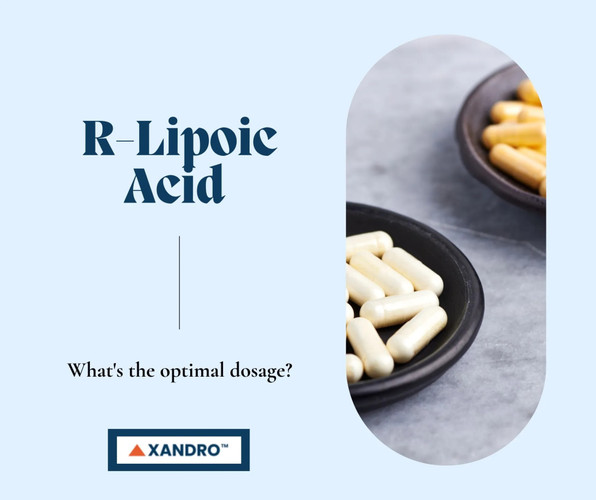R-Lipoic Acid Dosage, Benefits and Side Effects
18th Oct 2023
What Is the Optimal Dosage for R-Lipoic Acid?
Alpha-lipoic acid is an antioxidant that’s both water- and fat-soluble and that’s naturally made in the body — only in small amounts — but also found in foods like red meat, carrots, beetroots, spinach, broccoli and potatoes.
R-lipoic acid is the natural form of alpha-lipoic acid, whereas S-lipoic acid is the synthesised version. Alpha-lipoic acid is a combination of the two. Supplements only containing R-lipoic acid more expensive, yet information about their purity is generally not available. All current human studies have used both.
R-lipoic acid benefits vary, but alpha-lipoic acid is commonly taken for nerve pain in people with diabetes. It’s also used for obesity, altitude sickness, aging skin, high cholesterol levels, helping with certain liver diseases and also for added protection to the brain due to its anti-inflammatory properties.
As for alpha-lipoic acid side effects, alpha-lipoid acid is possibly safe to take orally for up to 4 years, with headache, heartburn, nausea and vomiting possible side effects. When applied to the skin, alpha-lipoic acid is possibly safe to take for up to 12 weeks and may cause a rash.
Before taking R-Lipoic acid, consult with your doctor for possible interactions with medications. It may decrease the effects of medications for cancer and thyroid hormone.
How much alpha lipoic acid should you take a day? Alpha-lipoic acid is commonly used by adults in doses of 600–800mg daily orally for up to 6 months but research has found adults can take up to 2,400mg without harmful side effects. It’s best to take alpha-lipoic supplements on an empty stomach, as some foods can reduce its absorption ability (bioavailability).
